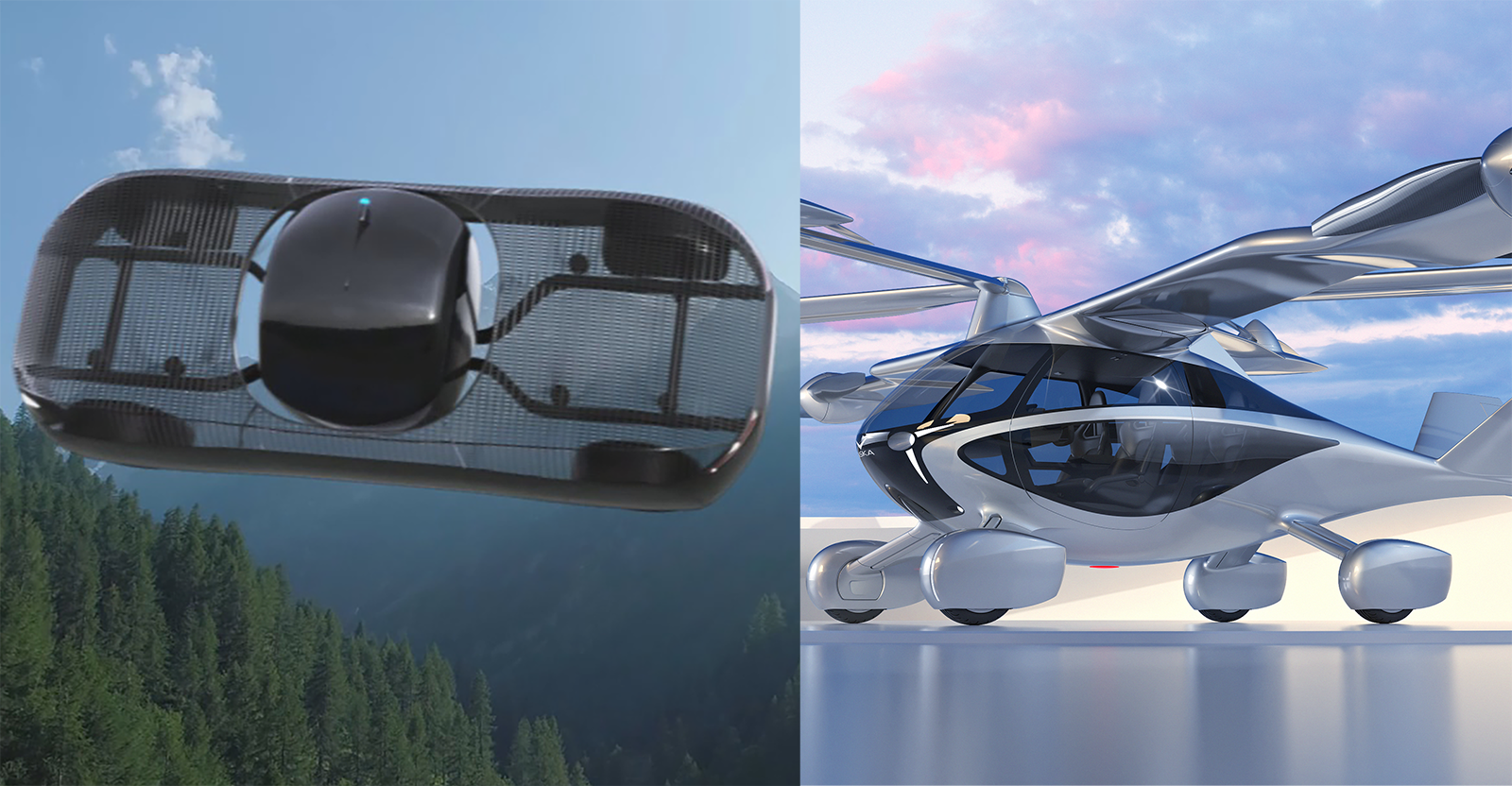Stay Up to Date
Submit your email address to receive the latest industry and Aerospace America news.
First customer flights won’t include taking off from public roadways
The two Silicon Valley flying car startups that have received FAA airworthiness certificates for flight testing do not expect regulators to permit their first customers to go airborne from public roadways, and in fact, a licensed pilot would have to be at the controls.
Alef, based in Santa Clara, has shared a promotional video on its website showing its vehicle, the Model A, rolling up to a jackknifed semi-trailer truck and taking off vertically to fly past the crash site. “This is not possible under current regulations,” and won’t be possible for “several years,” the company acknowledged by email when I asked about the feasibility of taking off from public roads.
“Early customers will have limited usage, but hopefully still enough to make their commute better. That being said, this is what we hope [will] eventually be one of the uses.”
Aska of Mountain View said its customers would drive to and from helipads or regional airports.
Alef announced its FAA special airworthiness certificate on June 27 for its all-electric prototype, which it describes as nearly identical to the planned production version, the Model A. Aska announced two days later that it had received an airworthiness certificate to fly a prototype of its envisioned operational hybrid-electric vehicle.
“FAA is moving faster than anyone, including us, expected,” Alef co-founder and CEO Jim Dukhovny told me, referring to the special airworthiness certificate that permits Alef to fly a full-scale prototype of the Model A. “We’ve estimated we will achieve type certification and first commercial delivery by 2025. It could be faster.”
Aska’s CEO Guy Kaplinsky told me he sees a big advantage for flying cars over eVTOLs, the electric vertical takeoff and landing air taxis now in development. “Our vehicle would require zero infrastructure investment, as opposed to eVTOL, which requires vertiports and parking,” Kaplinsky said. Aska’s special airworthiness certificate permits it to fly its full-scale prototype.
The airworthiness certificates allow both companies to conduct flights in limited locations for specific testing purposes. Alef has flown previous subscale prototypes in jurisdictions outside FAA’s authority or in short hops that did not require an airworthiness certificate, the company said by email. Those flights tested the driving and flight modes, including vertical takeoff and landing, and a transition to wingborne aerodynamic flight, Dukhovny said.
Alef has touted its all-electric flying car plan since 2019, while keeping many details under wraps. It says its Model A would be capable of carrying two people, with a 320-kilometer driving range and 175-kilometer flying range.
“Alef is actively testing one aircraft currently, which is a precursor to Model A. But we have several aircrafts in development for testing,” the company said by email.
The current prototype has four wheels and eight propellers tucked away inside a metal mesh frame, a configuration Alef also plans to apply to the production version.
According to the company’s fact sheet, the passenger cabin of the Model A will be gimbaled so that passengers remain upright and facing forward while the body of the vehicle rotates to provide wingborne lift. This concept has been tested by the prototypes, Alef said.
“There are no exposed propellers for added safety, dampening the sound, and saving space,” the fact sheet reads. The Model A will have “obstacle detection and avoidance, glide landing, and full-vehicle ballistic parachute.”
Alef declined to say how many preorders it has, but says the total value is $250 million. Each Model A is priced at $300,000, so that would work out to about 830 preorders.
Dukhovny also declined to say how many employees the company has in Santa Clara and a second site in San Mateo. In the long term, he said, the goal is to also produce a four-seat flying car with a lower price.
“We’re trying to be as close to an automotive business model as possible, with dealerships like Tesla,” he said. “Ultimately, we want to get it at the same price as a Toyota Corolla.”
Both Alef and Aska, in promotional literature, say their vehicles will be true flying cars, meaning OK’d for travel on public roads, but neither company has obtained approvals from the U.S. National Highway Traffic Safety Administration for their vehicles to do that.
Aska said that under the airworthiness certificate, it has begun flying a full-sized prototype of its production vehicle, the A5.
Ultimately, Aska intends each A5 to seat three passengers and a pilot. The company’s hybrid-electric design relies on lithium-ion batteries and a gas-powered range extender that would charge the batteries in flight to achieve a maximum range of 400 kilometers.
Like Alef’s Model A, each A5 would also be equipped with a parachute and would be capable of vertical takeoff and landing. Plans call for four rotors mounted on wings, two of which would be tiltrotor, with two additional rotors on a front canard, or small wing. The main wings will be folded in for driving.
“Currently the FAA requires a pilot on board, but that may change,” Kaplinsky said.
He declined to comment on how close the current prototype is to the intended production design, citing competition.
He said the A5 will only drive on local roads, not highways, due to limited speed.
Get the latest news about advanced air mobility delivered to your inbox every two weeks.
About paul brinkmann
Paul covers advanced air mobility, space launches and more for our website and the quarterly magazine. Paul joined us in 2022 and is based near Kennedy Space Center in Florida. He previously covered aerospace for United Press International and the Orlando Sentinel.
Related Posts
Stay Up to Date
Submit your email address to receive the latest industry and Aerospace America news.




